Philodendron Moonlight
Scientific Name: Philodendron Moonlight
Common Name: Moonlight Philodendron
Philodendron Moonlight care is an easy to care for houseplant, so long as you are able to mimic its natural environment, a subtropical space coming from South America. To keep this plant growing beautifully and healthy, keep the soil moist but not soaking wet, provide it with adequate bright sunlight, and provide it with a temperature of 65-78F. By doing all of this, you can give your Philodendron Moonlight the best care.
Quick Care Overview
| Common Name | Moonlight Philodendron |
| Scientific Name | Philodendron Moonlight |
| Family | Araceae |
| Origin | Central and South America |
| Growth Rate | Medium |
| Identification | Light green oval shaped leaves with prominent veining |
| Height | Up to 2 feet tall |
| Soil | 2:1 peat moss or coconut coir to perlite or orchid bark |
| Water | Consistently moist but not oversaturated |
| Temperature | 65-78F |
| Sunlight | Bright indirect sunlight |
| Toxic to Cats & Dogs | Yes |
| Toxic to Humans | Yes |
| Pests | Mealybugs and aphids |
| Diseases | Root rot |
Below we will dive deep into how to care for Philodendron Moonlight.
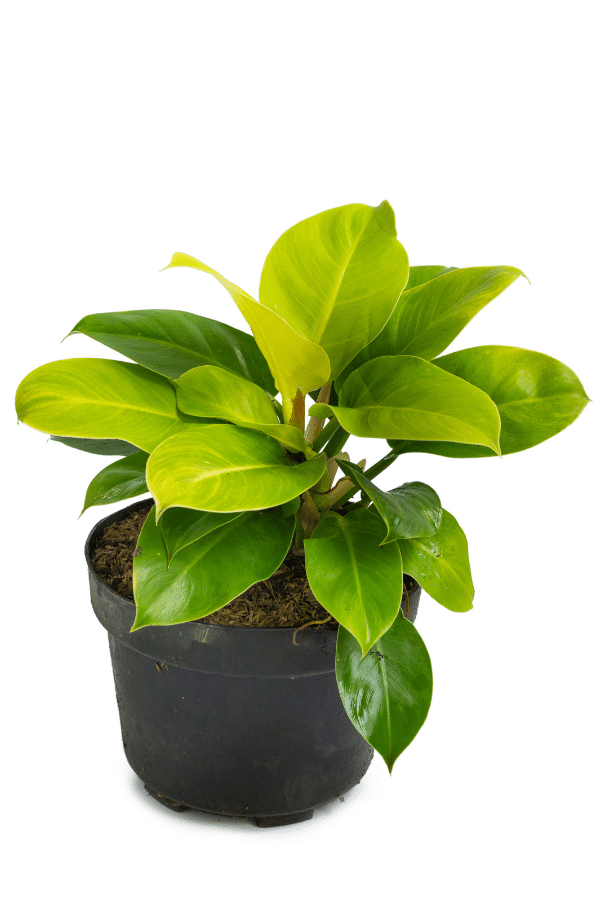
Philodendron Moonlight History
Moonlight Philodendron is a bright and cheery evergreen hybrid Philodendron that has become a very popular pick for avid houseplant collectors. Being very easy to care for, having a low-clumping habit, and not requiring support like other vining Philodendrons, philodendron moonlight is a perfect choice for beginning gardeners and experienced houseplant collectors alike.
Philodendron Moonlight Identification
Philodendron Moonlight has vivid light-green oval-shaped leaves with prominent veining that may grow up to a foot long in length. Leaves appear almost fluorescent and will have a ribbed appearance when reaching maturity that brings a lovely contrast to the home space.
Philodendron Moonlight Growth Facts
Being compact and shrub-like, this Philodendron makes a perfect indoor plant and is very suitable for apartments, living rooms, balconies, or porches.
How Big Does a Philodendron Moonlight Get?
Philodendron Moonlight can grow to become up to two feet tall by two feet wide.

Philodendron Moonlight Care
This low-growing Philodendron is not fussy and is perfect for beginning gardeners and compact spaces.
Searching for a new houseplant?
Take our houseplant quiz to see what your next plant should be based on the room it’s in, the specific lighting the room receives, if you want it on the floor or on the table, and much more!
Philodendron Moonlight Soil
Philodendron Moonlight prefers to have well-draining, aerated, moisture-retaining soil. A 2:1 soil mixture of peat moss or coco coir to perlite and orchid bark should treat this plant nicely. Alternatively, a commercial soilless mix will also be satisfactory.
Philodendron Moonlight Fertilizer
Philodendron Moonlight will enjoy a regular monthly feeding from a balanced liquid fertilizer throughout the warm growing season of spring and summer. Follow all label instructions and do not overfertilize, as this may cause issues due to excess salts. Also, do not fertilize in the winter.
Philodendron Moonlight Watering
This Philodendron, being a tropical plant, prefers to remain consistently moist but not oversaturated. Rewater after the top inch of the soil has dried, typically once a week, depending on growing conditions. In winter, the watering frequency may be reduced to around once every two weeks. Do not overwater, as this may lead to fungal or bacterial disease.
Philodendron Moonlight Light Requirements
Philodendron Moonlight prefers bright indirect light. An eastern or western-facing window would be an ideal spot for this Philodendron to grow. Be sure not to place this plant in front of too much direct sunlight, as this will scorch the leaves. Place it a few feet away from the window or in front of sheer curtains.
Philodendron Moonlight Temperature & Humidity
Being a tropical plant, Philodendron Moonlight likes it hot and humid and prefers to be kept indoors at a temperature of 65 to 78F. Do not allow your plant to reach temperatures below 55 degrees, which will likely cause permanent damage to the plant. Unlike other Philodendrons, Philodendron Moonlight is more tolerant of lower humidity levels and will grow fine at around 50% humidity. However, higher levels of humidity from a humidifier will aid in more vigorous growth.
Repotting Philodendron Moonlight
This Philodendron is considered a slow-medium grower and will likely only need to be repotted every two to three years or whenever roots are seen poking out of the drainage holes. Select a pot that is 2 inches wider than the current container and repot in spring or early summer during the active growing months.
Philodendron Moonlight Maintenance & Pruning
Philodendron Moonlight does not need regular pruning, as it is not a vining Philodendron and maintains a very compact shape. On rare occasions, discolored leaves may need to be trimmed. Dust the leaves weekly to keep them healthy.
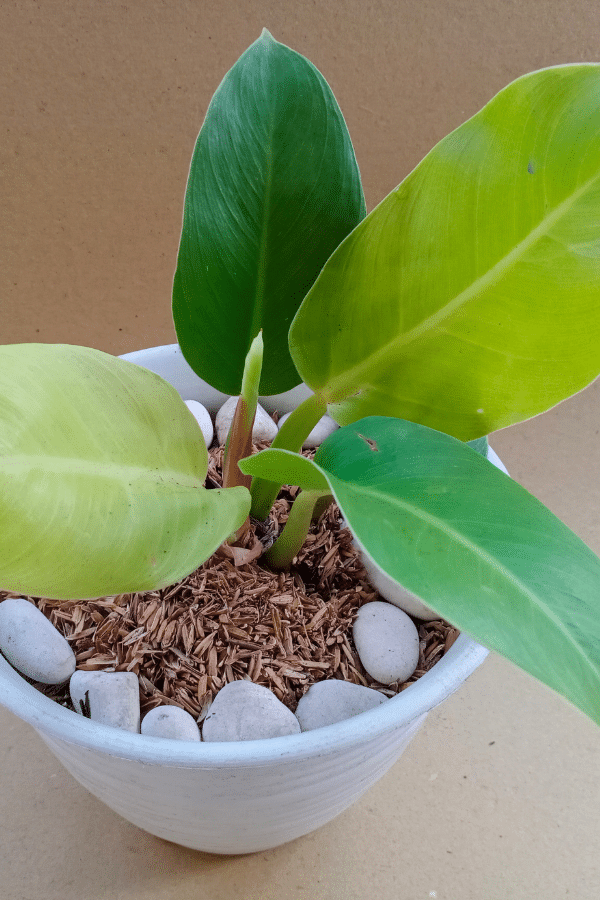
Philodendron Moonlight Propagation
Propagating Philodendron Moonlight is straightforward and may be done by root division or stem cuttings. Stem cuttings may be rooted in water or well-aerated soil. To take a stem cutting, select a stem that has some aerial roots and cut with a sharp, sterilized blade. Alternatively, you may separate the root ball of this plant into sections and repot to make additional Philodendron Moonlight plants.
Philodendron Moonlight Toxicity
Philodendron Moonlight is a toxic houseplant. Keep away from pets and children. Wear gloves when handling this plant and wash your hands after.
Toxicity to Humans
Like many other Philodendrons, Philodendron Moonlight contains calcium oxalate crystals that causes skin irritation in humans. Ingestion may cause difficulty breathing, nausea, vomiting, and mouth irritation. Do not consume any portion of this plant. Glove wearing is suggested when handling this plant during repotting or pruning, as the plants secretions may cause irritation to the skin.
Toxicity to Cats & Dogs
This Philodendron is extremely toxic to pets and should be kept out of reach. If ingestion of any portion of this plant is suggested, contact your veterinarian or animal poison control immediately.
Philodendron Moonlight Problems
Philodendron Moonlight Leaves Turning Yellow
Yellowing of the foliage on this Philodendron often indicates either overwatering or not enough light. Pale leaves may also be indicative that the plant is not receiving enough micronutrients and will benefit from additions from a micronutrient fertilizer that contains calcium and magnesium. Be sure to water the plant only when the top portion of the soil becomes dry and give it a bright spot to receive sunlight. If you still have yellow leaves on Philodendron Moonlight, consider giving it the micronutrient fertilizer.
Philodendron Moonlight Leaves Turning Brown
Browning of the leaves can either be a symptom of having too much water or too much sun. Mushy leaves with a yellow-brown color may be indicative of a fungal issue.
Philodendron Moonlight Diseases
Being a hardy plant, Philodendron Moonlight rarely suffers issues from plant disease. However, this plant may be affected by fungal and/or bacterial issues due to overwatering, such as root rot.
Philodendron Moonlight Pests
The thick leaves of Philodendron Moonlight make it largely pest resistant. However, in rare instances, it still may become susceptible to indoor insects such as aphids or mealybugs. Treatments of insecticidal soap will likely keep pest issues at bay. Be sure to follow all label instructions.
FAQ
Is Philodendron Moonlight an Indoor Plant?
Philodendron Moonlight is certainly an indoor plant. Although it can do well outside on a patio during the summer months, it can also do very well inside. Keep away from air vents and provide it with bright light and it will grow great.
Is Philodendron Moonlight a Climber?
The Philodendron Moonlight stays very compact and short in shape, making it a non-climber.
Why Is My Moonlight Philodendron Leaves Curling?
Reasons a moonlight philodendron leaves curl is because of low humidity, not enough water, or lack of nutrients. To remedy curling leaves, provide it with a good watering, then adequate humidity (50%), and if they are still curling, give it some fertilizer during the spring and summer only.

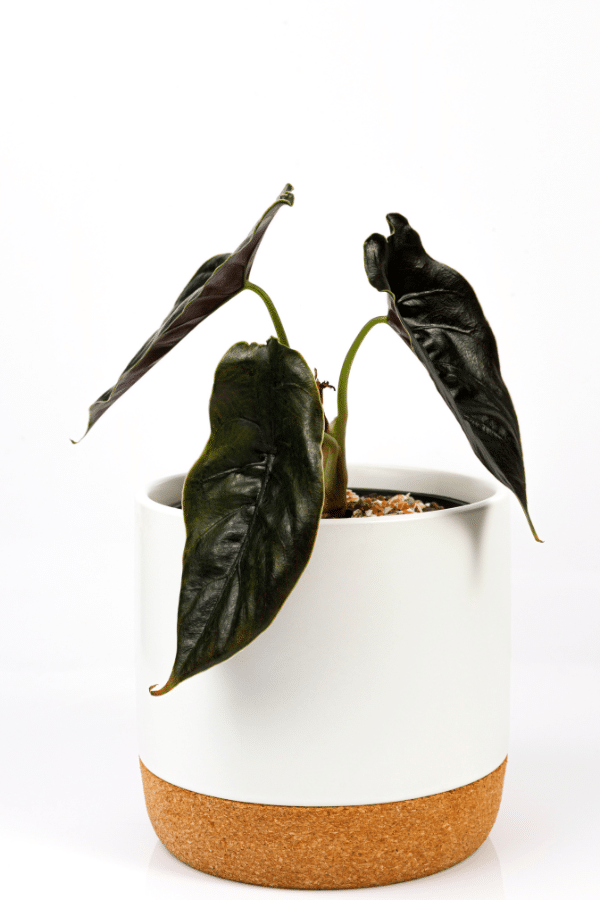
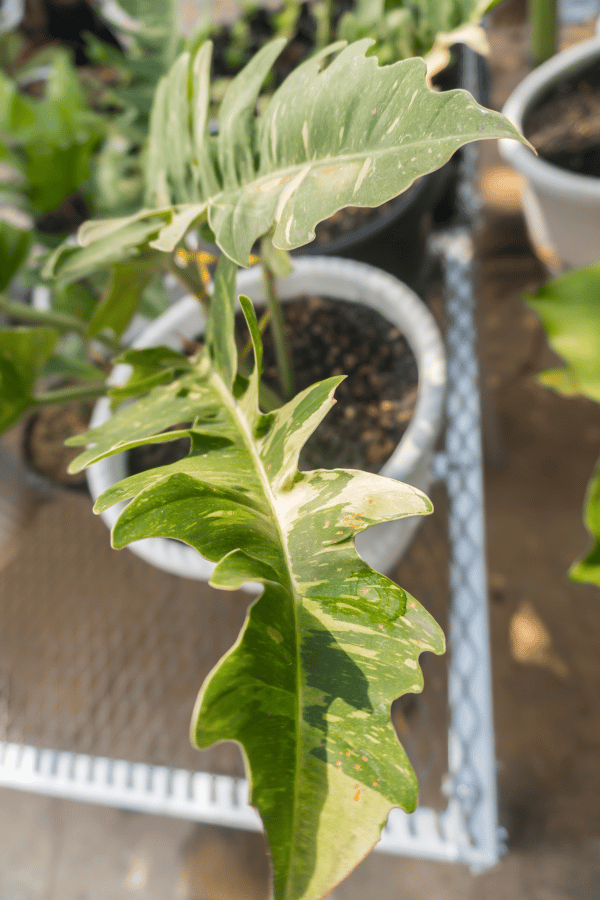
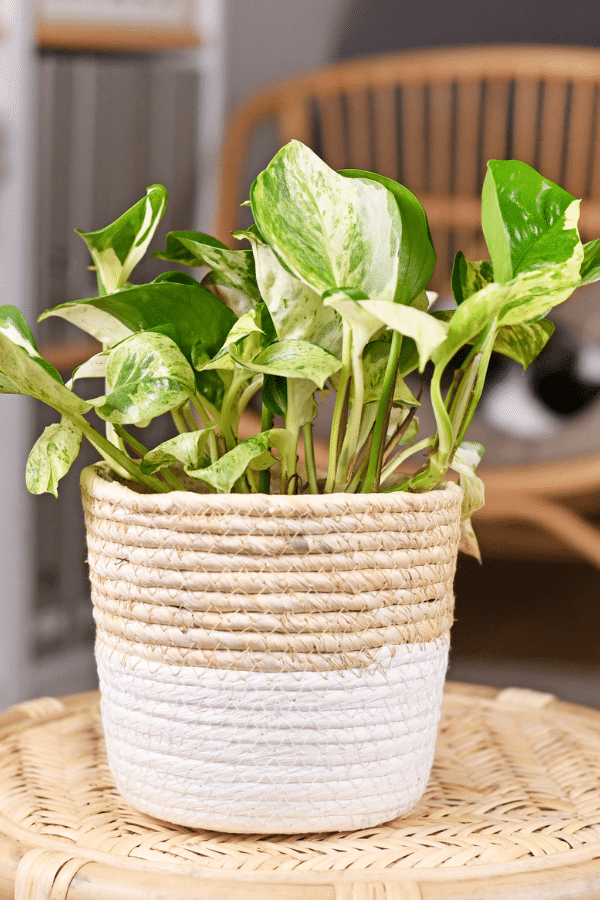
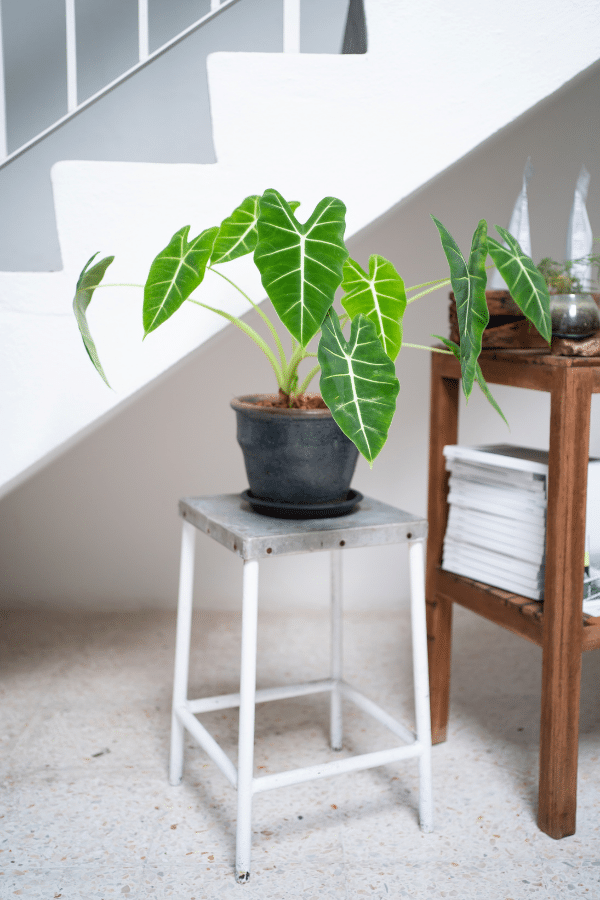
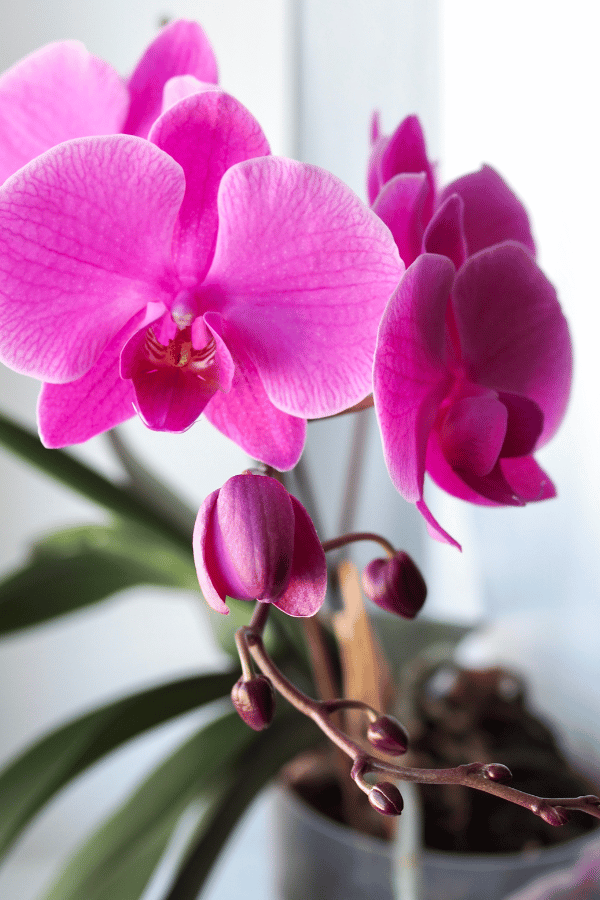
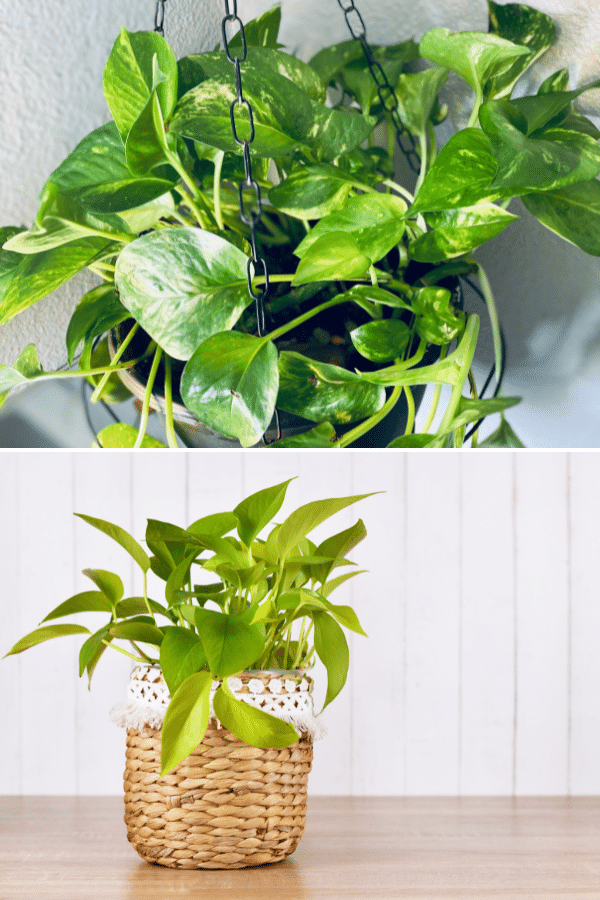
I recently purchased a Moonlight Philodendron, and I love how it perks up a garden space. I have a little browning on the edge of one leaf, and am concerned it is receiving too much sun (I live in Central Florida). I plan to move it to the east side of my house where it will receive only morning sun. My concern is I have problems with snails eating my plants on that side of my house. I have tried everything to deter them. I cannot find anything on the web that can tell me if snails like this particular plant. Any information you can provide is greatly appreciated!! Thank you.
Hi Kay, I just posted an article about snails eating philodendron moonlight. You can find that here. I really hope this helps. Cheers!